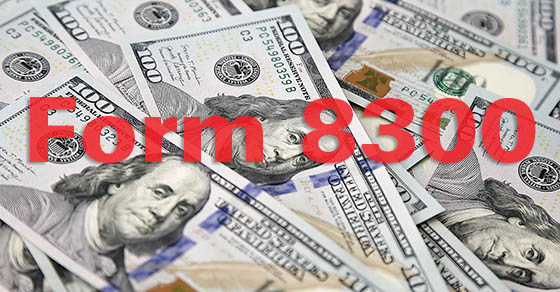Weekly Tax Brief
The 2025 SALT deduction cap increase might save you substantial taxes
- Details
- Published: 23 October 2025 23 October 2025

If you pay more than $10,000 in state and local taxes (SALT), a provision of the One Big Beautiful Bill Act (OBBBA) could significantly reduce your 2025 federal income tax liability. However, you need to be aware of income-based limits, and you may need to take steps before year end to maximize your deduction.
Higher deduction limit
Deductible SALT expenses include property taxes (for homes, vehicles and boats) and either income tax or sales tax, but not both. Historically, eligible SALT expenses were generally 100% deductible on federal income tax returns if an individual itemized deductions. This provided substantial tax savings to many taxpayers in locations with higher income or property tax rates (or higher home values), as well as those who owned both a primary residence and one or more vacation homes.
Beginning in 2018, the Tax Cuts and Jobs Act (TCJA) limited the deduction to $10,000 ($5,000 for married couples filing separately). This SALT cap was scheduled to expire after 2025.
Rather than letting the $10,000 cap expire or immediately making it permanent, the OBBBA temporarily quadruples the limit. Beginning in 2025, taxpayers can deduct up to $40,000 ($20,000 for married couples filing separately), with 1% increases each subsequent year. Then in 2030, the OBBBA reinstates the $10,000 cap.
The increased SALT cap could lead to major tax savings compared with the $10,000 cap. For example, a single taxpayer in the 35% tax bracket with $40,000 in SALT expenses could save an additional $10,500 in taxes [35% × ($40,000 − $10,000)].
Income-based reduction
While the higher limit is in place, it’s reduced for taxpayers with incomes above a certain level. The allowable deduction drops by 30% of the amount by which modified adjusted gross income (MAGI) exceeds a threshold amount. For 2025, the threshold is $500,000; when MAGI reaches $600,000, the previous $10,000 cap applies. (These amounts are halved for separate filers.) The MAGI threshold will also increase 1% each year through 2029.
Here’s how the earlier example would be different if the taxpayer’s MAGI exceeded the threshold: Let’s say MAGI is $550,000, which is $50,000 over the 2025 threshold. The cap would be reduced by $15,000 (30% × $50,000), leaving a maximum SALT deduction of $25,000 ($40,000 − $15,000). Even reduced, that’s more than twice what would be permitted under the $10,000 cap. The reduced deduction would still save an additional $5,250 in taxes [35% × ($25,000 − $10,000) compared to when the $10,000 cap applied.
Itemizing vs. the standard deduction
The SALT deduction is available only to taxpayers who itemize their deductions. The TCJA nearly doubled the standard deduction. As a result of that change and the $10,000 SALT cap, the number of taxpayers who itemize dropped substantially. And, under the OBBBA, the standard deduction is even higher — for 2025, it’s $15,750 for single and separate filers, $23,625 for head of household filers, and $31,500 for married couples filing jointly.
But the higher SALT cap might make it worthwhile for some taxpayers who’ve been claiming the standard deduction post-TCJA to start itemizing again. Consider, for example, a taxpayer who pays high state income tax. If that amount combined with other itemized deductions (generally, certain medical and dental expenses, home mortgage interest, qualified casualty losses, and charitable contributions) exceeds the applicable standard deduction, the taxpayer will save more tax by itemizing.
Year-end strategies
Here are two strategies that might help you maximize your 2025 SALT deduction:
1. Reduce your MAGI. If it’s nearing the threshold that would reduce your deduction or already over it, you can take steps to stay out of the danger zone. For example, you can make or increase pretax retirement plan and Health Savings Account contributions. Likewise, you can avoid moves that increase your MAGI, like Roth IRA conversions, nonrequired traditional retirement plan distributions and asset sales that result in large capital gains.
2. Accelerate property tax deductions. If your SALT expenses are less than $40,000 and your MAGI is below the reduction threshold for 2025, for example, you might prepay your 2026 property tax bill this year. (This assumes the amount has been assessed — you can’t deduct a prepayment based only on your estimate.)
Plan carefully
In your SALT planning, also be aware that SALT expenses aren’t deductible for purposes of the alternative minimum tax (AMT). A large SALT deduction could have the unintended effect of triggering the AMT, particularly after 2025.
Under the right circumstances, the increase to the SALT deduction cap can be a valuable tax saver. But careful planning is essential. Contact us for assistance with maximizing your SALT deduction and other year-end tax planning strategies.
© 2025
Should your business maximize deductions for real estate improvements now or spread them out?
- Details
- Published: 21 October 2025 21 October 2025

Commercial real estate usually must be depreciated over 39 years. But certain real estate improvements — specifically, qualified improvement property (QIP) — are eligible for accelerated depreciation and can even be fully deducted immediately. While maximizing first-year depreciation is often beneficial, it’s not always the best tax move.
QIP defined
QIP includes any improvement to an interior portion of a nonresidential building that’s placed in service after the date the building was placed in service. But expenditures attributable to the enlargement of the building, any elevator or escalator, or the building’s internal structural framework don’t count as QIP.
QIP has a 15-year depreciation period. It’s also eligible for bonus depreciation and Section 179 expensing.
100% bonus depreciation
Additional first-year bonus depreciation is available for eligible assets, including QIP. The One Big Beautiful Bill Act (OBBBA), signed into law in July, increases bonus depreciation to 100% for assets acquired and placed in service after Jan. 19, 2025. It also makes 100% bonus depreciation permanent.
But be aware that bonus depreciation is only 40% for assets acquired Jan. 1, 2025, through Jan. 19, 2025, and placed in service any time in 2025. So, if your objective is to maximize first-year deductions on QIP acquired during that period, you’d claim the Sec. 179 deduction first. (See below.) If you max out on that, then you’d claim 40% first-year bonus depreciation.
In some cases, a business may not be eligible for bonus depreciation. Examples include real estate businesses that elect to deduct 100% of their business interest expense and dealerships with floor-plan financing — if they have average annual gross receipts exceeding $31 million for the previous three tax years.
Sec. 179 expensing
Similar to 100% bonus depreciation, Sec. 179 expensing allows you to immediately deduct (rather than depreciate over a number of years) the cost of purchasing eligible assets, including QIP. But the break is subject to annual dollar limits, which the OBBBA increases.
For qualifying assets placed in service in tax years beginning in 2025, the maximum allowable Section 179 depreciation deduction is $2.5 million (up from $1.25 million before the OBBBA). In addition, the break begins to phase out dollar-for-dollar when asset acquisitions for the year exceed $4 million (up from $3.13 million before the OBBBA). These amounts will continue to be annually adjusted for inflation after 2025.
Another restriction is that you can claim Sec. 179 expensing only to offset net income. The deduction can’t reduce net income below zero to create an overall business tax loss.
One advantage over bonus depreciation is that, for Sec. 179 expensing purposes, QIP also includes HVAC systems, nonresidential building roofs, fire protection and alarm systems, and security systems that are placed in service after the building is first placed in service.
Spreading out QIP depreciation
There are a few reasons why it may be more beneficial to spread out QIP depreciation over 15 years rather than claiming large first-year depreciation deductions:
Bonus depreciation can trigger the excess business loss rule. Although you can claim 100% first-year bonus depreciation even if it will create a tax loss, you could inadvertently trigger the excess business loss rule.
The rule limits deductions for current-year business losses incurred by noncorporate taxpayers: Such losses generally can offset income from other sources, such as salary, self-employment income, interest, dividends and capital gains, only up to the applicable limit. For 2025, the limit is $313,000 ($626,000 for a married joint filer).
As a result, your 100% first-year bonus depreciation deduction might effectively be limited by the excess business loss rule. However, any excess business loss is carried over to the following tax year and can then be deducted under the rules for net operating loss carryforwards.
Large first-year deductions can result in higher-taxed gain when QIP is sold. First-year bonus depreciation and Sec. 179 deductions claimed for QIP can create depreciation recapture that’s taxed at your ordinary income rate when the QIP is sold. Under rates made permanent by the OBBBA, the maximum individual rate on ordinary income is 37%. You may also owe the 3.8% net investment income tax (NIIT).
On the other hand, for QIP held for more than one year, gain attributable to straight-line depreciation is taxed at an individual federal rate of only 25%, plus the 3.8% NIIT if applicable.
Depreciation deductions may be worth more in the future. When you claim big first-year depreciation deductions for QIP, your depreciation deductions for future years are reduced accordingly. If you’re in a higher income tax bracket in the future or federal income tax rates go up, you’ll have effectively traded potentially more valuable future-year depreciation deductions for less-valuable first-year deductions.
Keep in mind that, while the OBBBA did “permanently” extend current rates, that only means they have no expiration date. Lawmakers could still increase rates in the future.
What’s best for you
Many factors must be considered before deciding whether to maximize QIP first-year depreciation deductions or spread out the deductions over multiple years. We can help you determine what’s best for your situation.
© 2025
The 2025–2026 “high-low” per diem business travel rates are here
- Details
- Published: 09 October 2025 09 October 2025

If you have employees who travel for business, you know how frustrating it can be to manage reimbursements and the accompanying receipts for meals, hotels and incidentals. To make this process easier, consider using the “high-low” per diem method. Instead of tracking every receipt, your business can reimburse employees using daily rates that are predetermined by the IRS based on whether the destination is a high-cost or low-cost location. This saves time and reduces paperwork while still ensuring compliance. In Notice 2025-54, the IRS announced the high-low per diem rates that became effective October 1, 2025, and apply through September 30, 2026.
How the per diem method works
The per diem method provides fixed travel per diems rather than requiring employees to save every meal receipt or hotel bill. Employees simply need to document the time, place and business purpose of their trip. As long as reimbursements don’t exceed the applicable IRS per diem amounts, they aren’t treated as taxable income to the employee and don’t require income or payroll tax withholding.
Under the high-low method, the IRS establishes an annual flat rate for certain areas with higher costs. All locations within the continental United States that aren’t listed as “high-cost” are automatically considered “low-cost.” The high-low method may be used in lieu of the specific per diem rates for business destinations. Examples of high-cost areas include Boston and Los Angeles. But many locations are considered high-cost during only part of the year. Some of these partial-year locations are resort areas, while others are major cities where costs may be lower for, say, some of the colder months of the year, such as New York City and Chicago.
Under some circumstances — for example, if an employer provides lodging or pays the hotel directly — employees may receive a per diem reimbursement only for their meals and incidental expenses. There’s also a $5 incidental-expenses-only rate for employees who don’t pay or incur meal expenses for a calendar day (or partial day) of travel.
The new high-low per diems
For travel after September 30, 2025, the per diem rate for high-cost areas within the continental United States is $319. This consists of $233 for lodging and $86 for meals and incidental expenses. For all other areas within the continental United States, the per diem rate is $225 for travel after September 30, 2025 ($151 for lodging and $74 for meals and incidental expenses).
For travel during the last three months of 2025, employers must continue to use the same reimbursement method for an employee as they used during the first nine months of the calendar year. Also, note that per diem rates can’t be paid to individuals who own 10% or more of the business.
Revisit reimbursement methods
As the beginning of a new year approaches, it’s a good time to review how your business reimburses employees’ business travel expenses. Switching from an actual expense method to a per diem method in 2026 could save your business and your employees time and frustration. Contact us if you have questions about efficient and tax-compliant travel reimbursement methods.
© 2025
Making the most of the new deduction for seniors
- Details
- Published: 07 October 2025 07 October 2025

For 2025 through 2028, individuals age 65 or older generally can claim a new “senior” deduction of up to $6,000 under the One Big Beautiful Bill Act (OBBBA). But an income-based phaseout could reduce or eliminate your deduction. Fortunately, if your income is high enough that the phaseout is a risk, there are steps you can take before year end to help preserve the deduction.
Senior deduction basics
You don’t have to be receiving Social Security benefits to claim the senior deduction. If you’re age 65 or older on December 31 of the tax year, you’re potentially eligible.
If both spouses of a married couple filing jointly are age 65 or older, each spouse is potentially eligible for the $6,000 deduction, for a combined total of up to $12,000. But you must file a joint return; married couples filing separately aren’t eligible.
Combining the senior and standard deductions
Taxpayers age 65 or older already are eligible for an additional standard deduction on top of the basic standard deduction. The following examples illustrate how large the three deductions can be on a combined basis for 2025:
Single filer. An unmarried individual age 65 or older can potentially deduct a total of up to $23,750: $15,750 for the basic standard deduction plus $2,000 for the additional standard deduction for a senior single filer plus $6,000 for the new senior deduction.
Joint filer. If both members of a married couple are age 65 or older, they can potentially deduct a total of up to $46,700: $31,500 for the joint filer basic standard deductions plus two times $1,600 for the additional standard deductions for senior joint-filers plus two times $6,000 for the new senior deduction.
How the phaseout works
The senior deduction begins to phase out when modified adjusted gross income (MAGI) exceeds $75,000 for single filers or $150,000 for joint filers. The deduction is eliminated when MAGI exceeds $175,000 or $250,000, respectively. Specifically, the deduction is phased out by 6% of the excess of your MAGI over the applicable phaseout threshold. For this purpose, MAGI means your “regular” AGI increased by certain tax-exempt offshore income (which most taxpayers don’t have).
Here are two examples:
Example 1. For 2025, you’re a single individual age 65 or older. Your MAGI for the year is $130,000. Under the phaseout, your senior deduction is reduced by $3,300 [6% × ($130,000 − $75,000)]. So your senior deduction is $2,700 ($6,000 − $3,300).
Example 2. For 2025, you and your spouse file jointly. You’re both age 65 or older. Your MAGI for the year is $220,000. Under the phaseout rule, your two senior deductions are reduced by $4,200 each [6% × ($220,000 − $150,000)]. So your senior deduction is $1,800 each ($6,000 − $4,200), or $3,600 on a combined basis.
Year-end planning tips
If you’re concerned your 2025 MAGI could exceed the applicable phaseout threshold — or that your senior deduction could be completely phased out — there are moves you can make by December 31 to help maximize your deduction. Specifically, take steps to reduce your MAGI. Here are some potential ways to do it:
- Harvest capital losses in taxable brokerage accounts to offset capital gains that would otherwise increase your MAGI.
- Defer selling appreciated securities held in taxable brokerage accounts to avoid increasing your MAGI by the capital gains you’d recognize if you sold them.
- If you’re still working, maximize salary-reduction contributions to tax-deferred retirement accounts, like your traditional 401(k), which will reduce your MAGI.
- Defer or spread out Roth IRA conversions over several years, because your MAGI will be increased by taxable income triggered by the conversions.
- If you’re age 73 or older and thus subject to required minimum distributions (RMDs) on your traditional IRA(s), consider making IRA qualified charitable distributions (QCDs). Done properly, the QCDs will count toward your RMD and will be excluded from your taxable income and your MAGI.
Depending on your situation, there may be other moves you can make that will reduce your MAGI.
A valuable tax saver
The new senior deduction can be a valuable tax saver for eligible taxpayers. Please contact us with any questions you have. We can help you determine the best year-end tax planning strategies for your particular situation.
© 2025
5 potential tax breaks to know before moving a parent into a nursing home
- Details
- Published: 02 October 2025 02 October 2025

Approximately 1.3 million Americans live in nursing homes, according to the National Center for Health Statistics. If you have a parent moving into one, taxes are probably not on your mind. But there may be tax implications. Here are five possible tax breaks.
1. Long-term medical care
The costs of qualified long-term care, including nursing home care, are deductible as medical expenses to the extent they, along with other medical expenses, exceed 7.5% of adjusted gross income (AGI).
Qualified long-term care services are necessary diagnostic, preventive, therapeutic, curing, treating, mitigating and rehabilitative services, and maintenance or personal-care services required by a chronically ill individual that are provided by a licensed healthcare practitioner.
To qualify as chronically ill, a physician or other licensed healthcare practitioner must certify an individual as unable to perform at least two activities of daily living (eating, toileting, transferring, bathing, dressing and continence) for at least 90 days due to a loss of functional capacity or severe cognitive impairment.
2. Nursing home payments
Amounts paid to a nursing home are deductible as medical expenses if a person is staying at the facility principally for medical, rather than custodial care. If a person isn’t in the nursing home principally to receive medical care, only the portion of the fee that’s allocable to actual medical care qualifies as a deductible expense. But if the individual is chronically ill, all qualified long-term care services, including maintenance or personal care services, are deductible.
If your parent qualifies as your dependent, you can include any medical expenses you incur for your parent along with your own when determining your medical deduction.
3. Long-term care insurance
Premiums paid for a qualified long-term care insurance contract are deductible as medical expenses (subject to limitations explained below) to the extent they, along with other medical expenses, exceed the percentage-of-AGI threshold. A qualified long-term care insurance contract covers only qualified long-term care services, doesn’t pay costs covered by Medicare, is guaranteed renewable and doesn’t have a cash surrender value.
Qualified long-term care premiums are includible as medical expenses up to certain amounts. For individuals over 60 but not over 70 years old, the 2025 limit on deductible long-term care insurance premiums is $4,810, and for those over 70, the 2025 limit is $6,020.
4. The sale of your parent’s home
If your parent sells his or her home, up to $250,000 of the gain from the sale may be tax-free. To qualify for the $250,000 exclusion ($500,000 if married), the seller must generally have owned and used the home for at least two years out of the five years before the sale. However, there’s an exception to the two-out-of-five-year use test if the seller becomes physically or mentally unable to care for him- or herself during the five-year period.
5. Head-of-household filing status
If you aren’t married and your parent meets certain dependency tests, you may qualify for head-of-household filing status, which has a higher standard deduction and, in some cases, lower tax rates than single filing status. You might be eligible to file as head of household even if the parent for whom you claim an exemption doesn’t live with you.
These are only some of the tax issues you may have to contend with when your parent moves into a nursing home. Contact us if you need more information or assistance.
© 2025
The tax traps of personally guaranteeing a loan to your corporation
- Details
- Published: 01 October 2025 01 October 2025

If you’re considering guaranteeing, or are asked to guarantee, a loan to your closely held corporation, it’s important to understand the potential tax consequences. Acting as a guarantor, endorser or indemnitor means that if the corporation defaults, you could be responsible for repaying the loan. Without planning ahead, you may face unexpected tax implications.
A business bad debt
If you’re compelled to make good on the obligation, the payment of principal or interest in discharge of the obligation generally results in a bad debt deduction. This may be either a business or a nonbusiness bad debt deduction. If it’s a business bad debt, it’s deductible against ordinary income. A business bad debt can be either totally or partly worthless. If it’s a nonbusiness bad debt, it’s deductible as a short-term capital loss, which is subject to certain limitations. A nonbusiness bad debt is deductible only if it’s totally worthless.
To be treated as a business bad debt, the guarantee must be closely related to your trade or business. If the reason for guaranteeing the corporation loan is to protect your job, the guarantee is considered closely related to your trade or business as an employee. But employment must be the dominant motive. If your annual salary exceeds your investment in the corporation, this generally shows that the dominant motive for the guarantee is to protect your job. On the other hand, if your investment in the corporation substantially exceeds your annual salary, that’s evidence that the guarantee is primarily to protect your investment rather than your job.
Proving the relationship
Except in the case of job guarantees, it may be difficult to show the guarantee is closely related to your trade or business. You have to show that the guarantee is related to your business as a promoter, or that the guarantee is related to some other trade or business separately carried on by you.
If the reason for guaranteeing your corporation’s loan isn’t closely related to your trade or business and you’re required to pay off the loan, you can take a nonbusiness bad debt deduction if you show that your reason for the guarantee was to protect your investment, or you entered the guarantee transaction with a profit motive.
Note: The IRS and courts will scrutinize the dominant motive carefully. Reasonable compensation doesn’t always mean money. It can include protecting employment or business interests.
Additional requirements
In addition to satisfying the above requirements, a business or nonbusiness bad debt is deductible only if you meet these three conditions:
- You have a legal duty to make the guaranty payment (although there’s no requirement that a legal action be brought against you).
- The guaranty agreement is entered into before the debt becomes worthless.
- You receive reasonable consideration (not necessarily cash or property) for entering into the guaranty agreement.
Any payment you make on a loan you guaranteed is deductible as a bad debt in the year you make it, unless the agreement (or local law) provides for a right of subrogation against the corporation. If you have this right, or some other right to demand payment from the corporation, you can’t take a bad debt deduction until the rights become partly or totally worthless.
These are only some of the possible tax consequences of guaranteeing a loan to your closely held corporation. Consult with us to learn all the implications and to help ensure the best tax results.
© 2025
Tax Court case provides lessons on best recordkeeping practices for businesses
- Details
- Published: 23 September 2025 23 September 2025

Running a successful business requires more than delivering great products or services. Behind the scenes, meticulous recordkeeping plays a crucial role in financial health, compliance and tax savings. Good records can mean the difference between successfully defending a deduction and losing valuable tax breaks. A recent U.S. Tax Court decision underscores just how important this is.
Why it matters
The IRS requires all businesses — no matter how small — to maintain records that accurately reflect income, expenses, assets and liabilities. Without these records, it’s nearly impossible to:
- Substantiate tax deductions and credits,
- Track cash flow and profitability,
- Prepare accurate financial statements,
- Monitor the progress of your business,
- Support decisions for financing, and
- Demonstrate compliance during an IRS audit.
In short, strong recordkeeping protects your business, both for operational and tax law purposes.
Taxpayer loses deductions due to insufficient records
In one case, a union power‐line worker also had business interests in a storm response partnership, a salon and a rental property. He claimed significant losses and business expenses on his return for the year in question. Among his claimed deductions were partnership losses and expenses for tools, clothing and travel.
In Tax Court Memo 2025-12, the court disallowed substantial deductions because the taxpayer couldn’t properly substantiate them. Some invoices or receipts were missing or didn’t tie clearly to the business purpose.
For example, with vehicle or travel expenses, the court noted the lack of contemporaneous logs and details that distinguished business vs. personal use. For partnership losses, the taxpayer needed to show his basis in the partnership, but couldn’t provide clear documentation of all his capital contributions.
In addition to denying many of the taxpayer’s deductions, the court upheld an accuracy‐related penalty. This is an extra charge (typically 20% of the underpayment) that can be assessed when a taxpayer makes substantial mistakes on a tax return.
This case isn’t unique. Year after year, businesses lose valuable deductions for the same reason: poor recordkeeping.
Six key practices to protect tax breaks
To avoid costly mistakes, businesses should implement a recordkeeping system that’s both practical and compliant. Here are six best practices to consider:
1. Separate business and personal finances. Open a dedicated business checking account and credit card. Mixing personal and business expenses is one of the fastest ways to create confusion — and attract IRS scrutiny.
2. Maintain contemporaneous records. Document expenses when they occur, not months later. For example, keep mileage logs for business driving and note the purpose of each trip.
3. Use accounting software. Modern accounting platforms (like QuickBooks® or industry-specific tools) streamline recordkeeping. They allow you to categorize expenses, generate reports and integrate with bank accounts to minimize errors.
4. Keep source documents. For example, retain purchase and sale invoices, receipts, bank statements, canceled checks, and credit card bills. Scanning or photographing receipts ensures they won’t fade or get lost. Also, keep copies of Forms 1099-MISC and 1099-NEC. There are also specific employment tax records you must keep.
5. Retain records for the right amount of time. Generally, the IRS recommends keeping records for at least three years. That’s the amount of time that the tax agency can audit a tax return. However, some records (such as payroll tax or property records) should be kept longer. The length of time can be extended to six years if the income is underreported by more than 25%. And if no return is filed or fraud is involved, the IRS can conduct an audit for an indefinite amount of time.
6. Establish internal controls. For businesses with employees, internal checks help ensure the accuracy and integrity of records. Examples of these controls include requiring dual signatures for large expenses and segregating duties so that different employees handle authorization, custody of assets and recordkeeping.
Reliable records are vital
The lesson from the Tax Court case described above is clear: Without reliable records, even legitimate deductions can vanish. Don’t let poor documentation cost your business money. We can help your business:
- Set up a recordkeeping system tailored to your business,
- Learn which expenses are deductible (and how to document them),
- Review its books to catch issues before the IRS does, and
- Manage any IRS challenges to tax deductions.
Contact us to discuss how we can help you establish sound recordkeeping practices and safeguard valuable tax breaks.
© 2025
Receive $10,000 in cash at your business? The IRS wants to know about it
- Details
- Published: 17 September 2025 17 September 2025

Does your business receive large amounts of cash or cash equivalents? If so, you’re generally required to report these transactions to the IRS — and not just on your tax return. Here are some answers to questions you may have.
What are the requirements?
Although many cash transactions are legitimate, the IRS explains that the information reported on Form 8300 “can help stop those who evade taxes, profit from the drug trade, engage in terrorist financing and conduct other criminal activities. The government can often trace money from these illegal activities through the payments reported on Form 8300 and other cash reporting forms.”
Each person who, in the course of operating a trade or business, receives more than $10,000 in cash in one transaction (or two or more related transactions), must file Form 8300. Who is a “person”? It can be an individual, company, corporation, partnership, association, trust or estate. What are considered “related transactions”? Any transactions between the same payer and recipient conducted in a 24-hour period. Transactions can also be considered related even if they occur over a period of more than 24 hours if the recipient knows, or has reason to know, that each transaction is one of a series of connected transactions.
In order to complete Form 8300, you’ll need personal information about the person making the cash payment, including a Social Security or taxpayer identification number.
The IRS reminds businesses that they can “batch file” their reports, which is especially helpful to those required to file many forms.
Note: Under a rule that went into effect on January 1, 2024, businesses must now file Forms 8300 electronically if they’re otherwise required to e-file certain other information returns electronically, such as W-2s and 1099s. You also must e-file if you’re required to file at least 10 information returns other than Form 8300 during a calendar year.
What’s the definition of cash and cash equivalents?
For Form 8300 reporting purposes, cash includes U.S. currency and coins, as well as foreign money. It may also include cash equivalents such as cashier’s checks (sometimes called bank checks), bank drafts, traveler’s checks and money orders.
Money orders and cashier’s checks under $10,000, when used in combination with other forms of cash for a single transaction that exceeds $10,000, are defined as cash for Form 8300 reporting purposes.
What about digital assets such as cryptocurrency? Despite a 2021 law that would treat certain digital asset receipts like “cash,” the IRS announced in 2024 that you don’t have to report digital asset receipts on Form 8300 until regulations are issued. IRS Announcement 2024-4 remains the latest official word.
Note: Under a separate reporting requirement, banks and other financial institutions report cash purchases of cashier’s checks, treasurer’s checks and/or bank checks, bank drafts, traveler’s checks and money orders with a face value of more than $10,000 by filing currency transaction reports.
What type of penalties can be imposed for noncompliance?
If a business doesn’t file Forms 8300 on time, there can be a civil penalty of $310 for each missed form, up to an annual cap. The penalties are higher if the IRS finds the failure to file is intentional, and there can be criminal penalties as well.
In one recent case, an Arizona car dealer failed to file the required number of Forms 8300. While the dealer did file 116 forms for the year in question, the IRS determined that the business should have filed an additional 266 forms.
The tax agency assessed penalties of $118,140. The dealer argued that it had reasonable cause for not filing all the forms because the software it was using wasn’t functioning properly. However, the U.S. Tax Court ruled that the dealer wasn’t using the software correctly and didn’t take steps to foster compliance. (TC Memo 2025-38)
Stay on top of the requirements
Compliance with Form 8300 requirements can help your business avoid steep penalties and trouble with the IRS. Recordkeeping is critical. You should keep a copy of each Form 8300 for five years from the date you file it, according to the IRS. “Confirmation receipts don’t meet the recordkeeping requirement,” the tax agency adds.
Contact us with any questions or for assistance.
© 2025
Payroll tax implications of new tax breaks on tips and overtime
- Details
- Published: 11 September 2025 11 September 2025

Before the One Big Beautiful Bill Act (OBBBA), tip income and overtime income were fully taxable for federal income tax purposes. The new law changes that.
Tip income deduction
For 2025–2028, the OBBBA creates a new temporary federal income tax deduction that can offset up to $25,000 of annual qualified tip income. It begins to phase out when modified adjusted gross income (MAGI) is more than $150,000 ($300,000 for married joint filers).
The deduction is available if a worker receives qualified tips in an occupation that’s designated by the IRS as one where tips are customary. However, the U.S. Treasury Department recently released a draft list of occupations it proposes to receive the tax break and there are some surprising jobs on the list, including plumbers, electricians, home heating / air conditioning mechanics and installers, digital content creators, and home movers.
Employees and self-employed individuals who work in certain trades or businesses are ineligible for the tip deduction. These include health, law, accounting, financial services, investment management and more.
Qualified tips can be paid by customers in cash or with credit cards or given to workers through tip-sharing arrangements. The deduction can be claimed whether the worker itemizes or not.
Overtime income deduction
For 2025–2028, the OBBBA creates another new federal income tax deduction that can offset up to $12,500 of qualified overtime income each year or up to $25,000 for a married joint-filer. It begins to phase out when MAGI is more than $150,000 ($300,000 for married joint filers). The limited overtime deduction can be claimed whether or not workers itemize deductions on their tax returns.
Qualified overtime income means overtime compensation paid to a worker as mandated under Section 7 of the Fair Labor Standards Act (FLSA). It requires time-and-a-half overtime pay except for certain exempt workers. If a worker earns time-and-a-half for overtime, only the extra half constitutes qualified overtime income.
Qualified overtime income doesn’t include overtime premiums that aren’t required by Section 7 of the FLSA, such as overtime premiums required under state laws or overtime premiums pursuant to contracts such as union-negotiated collective bargaining agreements. Qualified overtime income also doesn’t include any tip income.
Payroll tax implications
While you may have heard the new tax breaks described as “no tax on tips” and “no tax on overtime,” they’re actually limited, temporary federal income tax deductions as opposed to income exclusions. Therefore, income tax may apply to some of your wages and federal payroll taxes still apply to qualified tip income and qualified overtime income. In addition, applicable federal income tax withholding rules still apply. And tip income and overtime income may still be fully taxable for state and local income tax purposes.
The real issue for employers and payroll management firms is reporting qualified tip income and qualified overtime income amounts so eligible workers can claim their rightful federal income tax deductions.
Reporting details
The tip deduction is allowed to both employees and self-employed individuals. Qualified tip income amounts must be reported on Form W-2, Form 1099-NEC, or another specified information return or statement that’s furnished to both the worker and the IRS.
Qualified overtime income amounts must be reported to workers on Form W-2 or another specified information return or statement that’s furnished to both the worker and the IRS.
IRS announcement about information returns and withholding tables
The IRS recently announced that for tax year 2025, there will be no OBBBA-related changes to federal information returns for individuals, federal payroll tax returns or federal income tax withholding tables. So, Form W-2, Forms 1099, Form 941, and other payroll-related forms and returns won’t be changed. The IRS stated that “these decisions are intended to avoid disruptions during the tax filing season and to give the IRS, business and tax professionals enough time to implement the changes effectively.”
Employers and payroll management firms are advised to begin tracking qualified tip income and qualified overtime income immediately and to implement procedures to retroactively track qualified tip and qualified overtime income amounts that were paid before July 4, 2025, when the OBBBA became law. The IRS is expected to provide transition relief for tax year 2025 and update forms for tax year 2026. Contact us with any questions.
© 2025
Teachers and others can deduct eligible educator expenses this year — and more next year and beyond
- Details
- Published: 05 September 2025 05 September 2025

At back-to-school time, much of the focus is on the students returning to the classroom — and on their parents buying them school supplies, backpacks, clothes, etc., for the new school year. But teachers are also buying school supplies for their classrooms. And in many cases, they don’t receive reimbursement. Fortunately, they may be able to deduct some of these expenses on their tax returns. And, beginning next year, eligible educators will have an additional deduction opportunity under the One Big Beautiful Bill Act (OBBBA).
The current above-the-line deduction
Eligible educators can deduct some of their unreimbursed out-of-pocket classroom costs under the educator expense deduction. This is an “above-the-line” deduction, which means you don’t have to itemize and it reduces your adjusted gross income (AGI), which has an added benefit: Because AGI-based limits affect a variety of tax breaks, lowering your AGI might help you maximize your tax breaks overall.
To be eligible, taxpayers must be kindergarten through grade 12 teachers, instructors, counselors, principals or aides. Also, they must work at least 900 hours a school year in a school that provides elementary or secondary education as determined under state law.
For 2025, up to $300 of qualified expenses paid during the year that weren’t reimbursed can be deducted. (The deduction limit is $600 if both taxpayers are eligible educators who file a joint tax return, but these taxpayers can’t deduct more than $300 each.) The limit is annually indexed for inflation but typically doesn’t go up every year.
Examples of qualified expenses include books, classroom supplies, computer equipment (including software), other materials used in the classroom, and professional development courses. For courses in health and physical education, the costs for supplies are qualified expenses only if related to athletics.
A new miscellaneous itemized deduction
The OBBBA makes permanent the Tax Cut and Jobs Act’s (TCJA’s) suspension of miscellaneous itemized deductions subject to the 2% of AGI floor. This had included unreimbursed employee business expenses such as teachers’ out-of-pocket classroom expenses. The suspension had been in place since 2018.
But the OBBBA creates a new miscellaneous itemized deduction for educator expenses. This is in addition to the $300 above-the-line deduction. And this deduction isn’t subject to the 2% of AGI floor or a specific dollar limit. The new deduction is available for eligible expenses incurred after Dec. 31, 2025.
Both who’s eligible and what expenses qualify are a little broader for the itemized deduction than for the above-the-line deduction. For example, interscholastic sports administrators and coaches are also eligible. And, for courses in health and physical education, the supplies don’t have to be related to athletics.
Keep in mind that you’ll have to itemize deductions to claim this new deduction next year. Taxpayers can choose to itemize this and certain other deductions or to take the standard deduction based on their filing status. Itemizing deductions saves tax only when the total is greater than the standard deduction. The OBBBA has made permanent the nearly doubled standard deductions under the TCJA, so fewer taxpayers are benefiting from itemizing.
Carefully track expenses
If you’re a teacher or other educator, keep receipts when you pay for eligible expenses and note the date, amount and purpose of each purchase. Have questions about educator deductions or other tax-saving strategies? Please contact us.
© 2025





